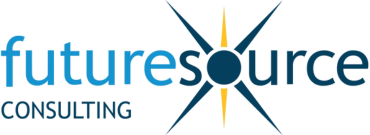Wearable devices can grant the elderly greater autonomy – if they’re willing to adopt them
Wearable healthcare devices like smartwatches and fitness trackers have become synonymous with active and outdoorsy folk, but body-monitoring devices like these can also be revolutionary in the care of the elderly. Also known as elderly watches, the goal is to allow older adults to live more independently day to day. Families can rest at ease knowing they’ll be alerted to any falls or fluctuations in key health indicators, and the user can get handy reminders to take their medications. Despite the devices’ strong advantages, in wearing them, some users feel they lose part of their independence – and so a paradox is created.
Barriers remain
With the elderly population rising, providing adequate care that prioritises independence is paramount. While wearable devices are an obvious solution, they carry a number of disadvantages that are acting as a barrier to their adoption in older adults.
First, it’s a case of familiarity. Older adults may be accustomed to wearing traditional analogue watches, but the idea of engaging with advanced technology may feel alien and off-putting. Often, the features of these watches are high-tech and potentially overwhelming. Again, this gets in the way of more widespread acceptance among older adults.
Plus, there are cost factors to consider. Watches for the elderly can be pricey, and convincing older adults to invest in a device they don’t fully understand is no small task. A lot of the time, it’s the family that buys the watch for elderly family members which avoids the issue. Equally, devices are far cheaper than nursing care, making them a cost-effective option. Yet there’s still the question of how to encourage older adults to use and engage with it.
The question of privacy
Arthritis and vision impairment are two conditions common in the elderly, which can make it tricky to use devices with small buttons or a touch screen. As well as creating frustration in users, it also nods towards wider issues of privacy. Getting older adults to understand not only how to use the device, but the key concept of their personal data and how it’s used, is an issue. It’s clear that users prefer to know what information the device is monitoring – but wider questions of data security remain unchartered territory to the demographic.
The constant monitoring by family members could be considered intrusive by older adults. With family members potentially watching their every move, the elderly may feel more like children than respected adults.
While these are certainly issues to consider, it’s not the only side of the story. Some users are keen to embrace elderly watches as useful tools that gift them greater autonomy over their health. The ability to share their location can be viewed as a way to ensure their personal safety and well-being. Ultimately, the adoption of new technology is an individual decision – one that shouldn’t be undertaken lightly.
The flip side
Despite social concerns, personal independence devices are advancing and providing better care for the elderly. New models are detecting falls more accurately than ever, with the TheoraCare being a prime example of this. Changes in behavioural patterns can be registered in real-time, alerting family members of any causes for concern.
Overall, elderly watches work as a fantastic preventative health tool. The challenges lie in ensuring the user is as informed as possible, to guarantee the autonomy and safety that the devices promise.
To find out more about Futuresource’s offerings in wearables and personal electronics, please get in touch with Leon at leon.morris@futuresource-hq.com.
Latest Consumer Electronics Reports
Latest Consumer Electronics Insights
